Don’t let these no-no’s screw up your yard in Gastonia, NC
SCALPING YOUR GRASS
Lawn mowing is not just about keeping up appearances: it’s about grass health, too. And scalping is a big “no-no”. You may think that cutting your lawn shorter means less mowing, but that isn’t true. As a matter of fact, it can do serious damage to your grass by eventually leaving bare spots.
Certain warm season grasses (bermuda, zoysia, etc.) are expected to be mowed at a shorter height. Cool season grasses (which is the predominant type of grass for the Piedmont region of North Carolina) such as fescue lawns are purposed to be cut at a taller height.
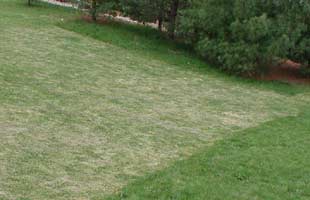
Forget the lawn-mowing myth that says the shorter you mow grass, the less often you’ll have to cut it. That misguided concept lays a foundation for a problem-prone lawn. We used to have a very kind, but elderly back door neighbor who insisted that unless he cut his grass short (scalped I mean), it just wasn’t considered to be a proper cut. Every summer he was provoking weed invasion, drought, heat damage, insects, and diseases to his lawn….that spread to mine.
Many times we see defiant homeowners using the lowest setting on their lawn mower in an effort to “cut out” their clover weeds. Those lawn mower blades just whirl those white flower stems sideways like a tornado but don’t really cut the problem. When you scalp the lawn you are making favorable conditions that encourage clover (poor soil and strong sunlight) while stressing the grass and inviting more weeds. For goodness sake, unless you’re growing a food plot for wildlife, buy some broadleaf herbicide to kill the clover and take yourself out of the redneck zone!
RED DYED MULCH
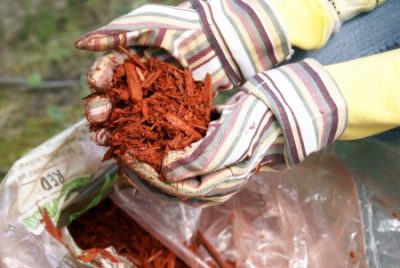
Red dyed mulch is not “dixie chic”. It is red neck ugly and a travesty to be used in a residential setting. Although it is still considered to be a pet peeve, we are willing to give consideration to businesses whose corporate logo colors are orange/red a break (Home Depot, Bojangle’s, Popeyes) because we guess they are trying to make a branding statement.
Mulch should look like one of Mother Nature’s natural organic extensions. But forget aesthetics. There’s a good reason why to never use dyed mulch. It isn’t made from natural wood. Unlike shredded or ground bark, dyed mulch doesn’t come directly from trees. Instead, it’s made from ground-up wooden pallets and waste wood. Waste wood like someone’s pressure-treated deck they tore off and threw away and dumped at the landfill. There are no standards for what’s in dyed mulch or where it comes from, especially if you buy it in bulk. It could contain insects, pesticides, preservatives, anything. The only thing about it that we know is safe is the source of the red dye – it’s iron oxide. Iron oxide is not toxic, it’s just plain ole rust. Just say “no” to red dyed mulch, please!
THE TERRIBLE TRINITY OF TROUBLE
What are the three worst things you can plant in your yard? Although homeowners have a specific mission in mind when planting all three of these specimens (they want fast growth with huge size), they are doomed from the beginning. Take the time to do your homework in advance on growth projections and visualize your shrub or tree 10 years from now. Become knowledgeable about common diseases and structural problems that are prone to these varieties. AVOID PLANTING REDTIP PHOTINIAS, LEYLAND CYPRESS, AND BRADFORD PEAR TREES !!!
Red Tip Photinias are large shrubs that were once used for tall hedging here in the south. It is easily recognized each spring as it sends out its first flush of bright red new leaves. As with many popular plant species, it has been widely planted and over used. With the rampant spread of a fungal leaf spot, many red tip hedges have died or are dying out. Red tips were commonly used to create tall hedges and were often planted too close together to allow for adequate air circulation, which made them more susceptible to leaf spot. Red tip photinia is highly susceptible to leaf spot, and as such its use for hedging is not recommended.
Leyland cypress has become increasingly popular as a landscape tree in North Carolina, especially for screens and hedges. With the increased planting that has resulted from its popularity, various diseases and pest problems have become more evident. Although relatively free of serious disease problems, several disease and insect problems are becoming more common. These include cankers, needle blight, and root rot diseases.
Bradford Pear Trees deliver a beautiful rounded canopy of white blossoms in early spring and vibrant fall colors. However, this tree possesses the weakest branch structure in nature. Bradford pears will seldom last more than 20 years before they bust themselves apart at the seams. They are highly susceptible to damage from thunderstorm wind gusts and winter ice storms.
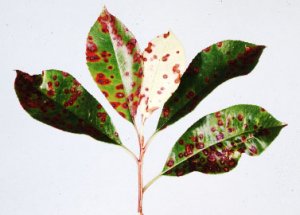
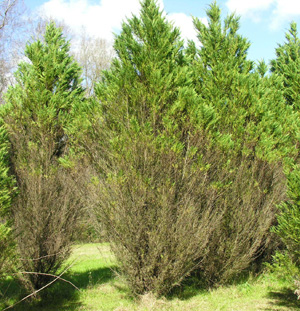
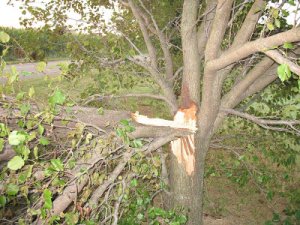
Alternate planting specimens for the landscape include the following: substitute Chinese fringe loropetalum for red tip photinias (evergreen flowering screening shrub); substitute Cryptomeria japonica or Green giant arborvitae for leyland cypress (quick growing screening tree); and substitute yoshino cherry tree for Bradford pear tree (early spring blooming ornamental tree).
When in doubt, hire a professional. If you have an interest for us to visit your Gastonia, NC property for a free consultation about lawn care, contact us today at (704) 813-2545. Click here to contact us via email.
